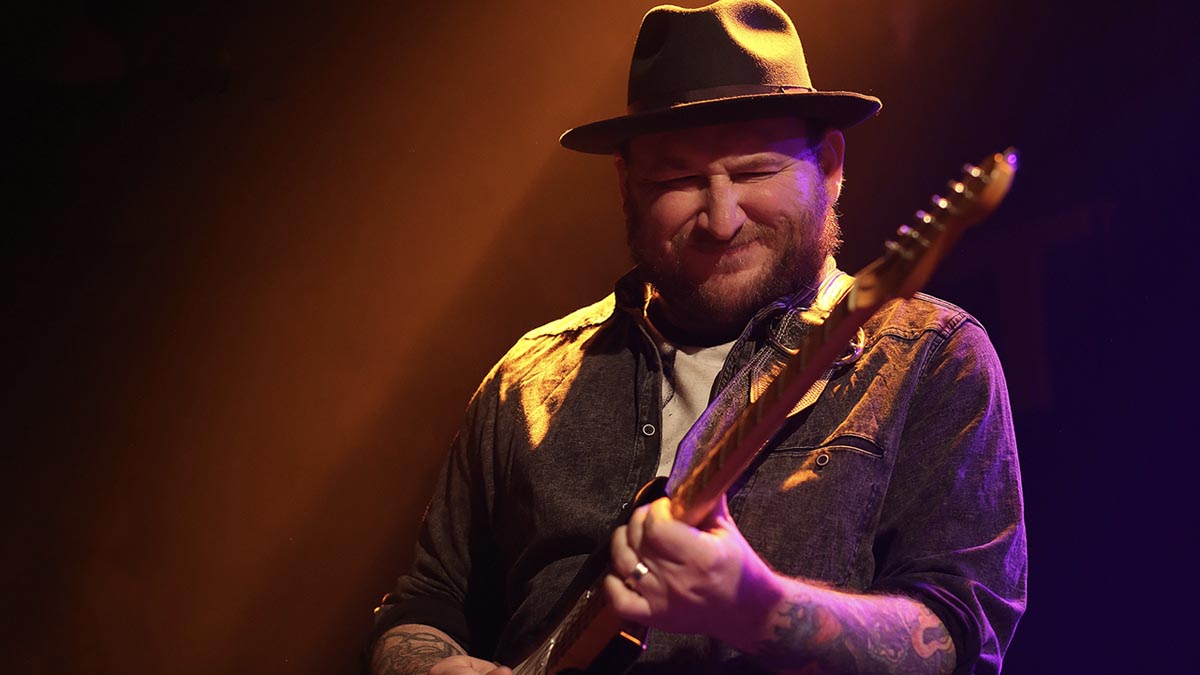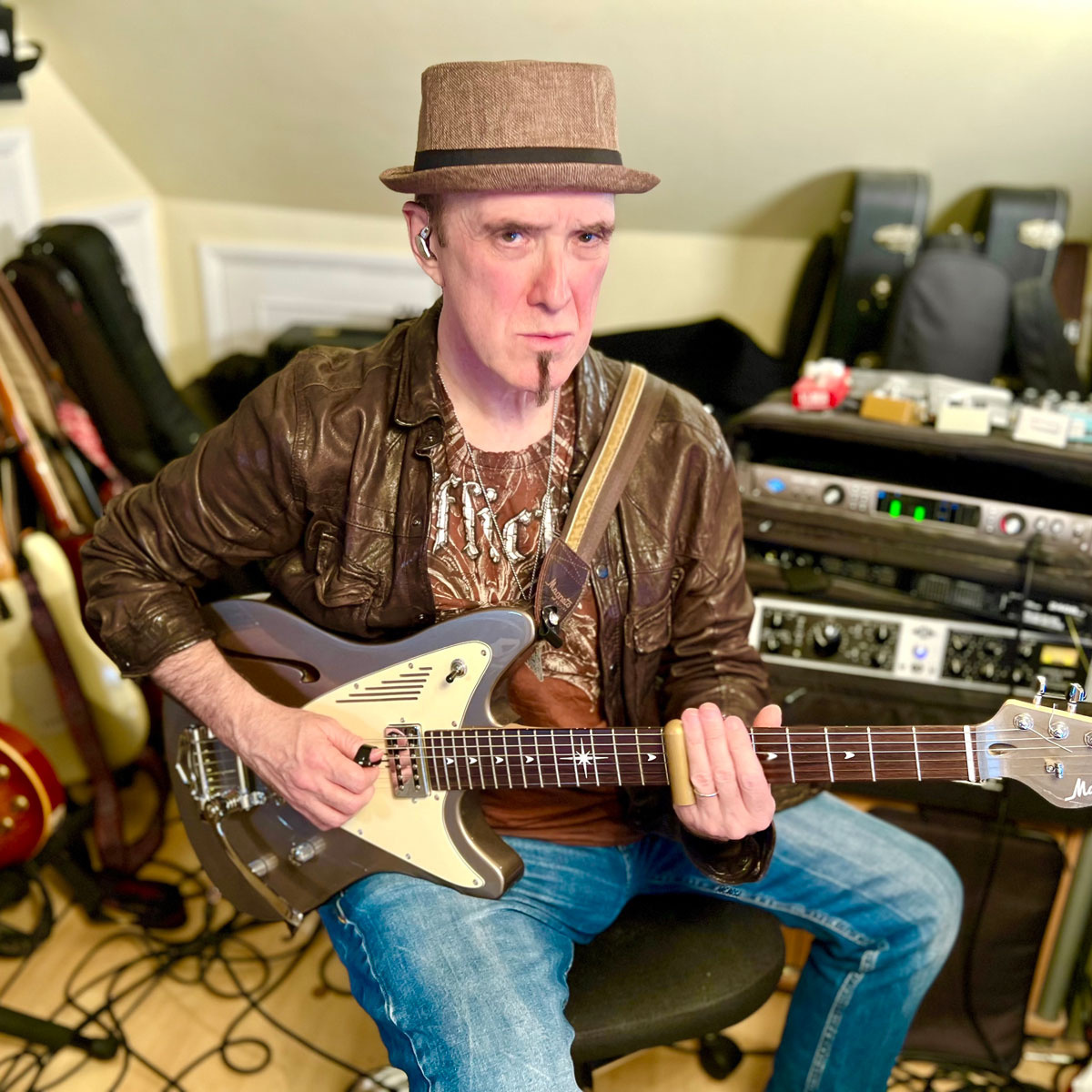How to solo over one of the most important turnarounds in music
The I-VI-II-V turnaround is one of the most common progressions in music, and in this lesson we'll help you find the bluesy lead guitar mojo to accompany it

In this lesson, we’re looking at a chord progression that occurs in countless pop, jazz and blues tunes – the I-VI-II-V turnaround, a device that’s often used to end a verse and set up a return to the start of the next.
Sometimes this progression will be used as an intro or vamp to solo over, and we’ll start by looking at the scales. In its simplest form, this progression is diatonic to the home key, meaning that all the notes from the chords come from the parent scale (here C Major).
Our second example outlines the chords by using only the notes of their scales. In bar 2, I stay within A Aeolian but I use a line that sounds a little like a blues lick, in order to inject extra soul into it.
As we get deeper into our examples, I introduce Secondary Dominants - these are the V chord to other chords within the key, but they have some notes that are outside the key and so provide some forward motion.
I start by using A7 rather than Am, as A7 is the Dominant of Dm7. This chord often has a flat 9 and a flat 13 - more on which later. I then turn Dm7 into D7 as that’s the Dominant of G7, which is chord V in the key of C.
When I make the chords half a bar long, I start linking the notes of the arpeggios. I don’t want to make this just a ‘jazz’ thing, and you can hear people like Brian Setzer run arpeggios like this.
When you first practise this progression, try running the arpeggios in ascending form – 1-3-5-7. You’ll notice that the jumps from one arpeggio to the next sound a little unmusical, so the next step is to play these from notes other than their roots.
After that, the challenge is to link the arpeggios by finding the nearest note of the next chord when you move from one to the next. The last examples were inspired by Josh Smith and Jim Mullen – both masters of making the blues scale fit nicely over the changes.
This is an art, because just wailing on the tonic blues scale will sound odd if you don’t refer to the chord tones of the progression at all, since the b3 and #4 are going to clash here and there. So, in order to make this work you need to practise until you know how far you can push your luck with using the Blues scale.
Get the tone
Amp settings: Gain 5, Bass 6, Middle 4, Treble 5, Reverb 5
Many of the modern blues players, like Josh Smith and Kirk Fletcher, prefer a cleaner tone than some of the older guard did. So go for a tone that just sits at the edge of overdrive as this will allow clarity of the notes and not obscure poor technique (too much distortion and other effects can hide sloppy chops). Add light reverb or delay to taste.
Example 1. The scales used in our turnaround
Here are the basic scales for the turnaround – they are all modes of C Major. Think of them as separate scales – it sounds better!
Example 2. Making it sound bluesy
In this diatonic lick when I got to Am7, I used a bluesy minor pentatonic idea – C Major is the relative Major of Am, and this works over both chords.
Example 3. Joining up the progression using chord tones
Here, we’re linking the chord tones of each chord to the next – it’s smoother than just playing up from the roots and sounds rather more jazzy.
Example 4. Adding a diminished arpeggio
Now, we add the flat 9 to the A7 and G7 chords. Running a diminished 7th arpeggio up from the 3rd of a 7th chord gives a 7b9 sound.
Example 5. Bluesy chord tones
Here’s a bluesy idea, but note that in bar 2 we’re playing on the chord tones – this makes the line sound like it’s very much inside the key.
Example 6. Smith-Mullen influence
Josh Smith and Jim Mullen inspired these last lines. We’re using the Blues scale, but note the use of an SRV inspired Db in bar 2 – the b9 of the tonic C major chord.
Get The Pick Newsletter
All the latest guitar news, interviews, lessons, reviews, deals and more, direct to your inbox!
A professional guitarist for many years, Andy G Jones has played with Van Morrison, James Ingram, Lamont Dozier, Queen (Brian May and Roger Taylor), Robben Ford, Billy Cobham, John Illsley (Dire Straits), KT Tunstall, Albert Lee (featured on Andy's upcoming CD), Mike Finnigan, Dave Landreth and Ryan Voth from The Bros. Landreth, Malford Milligan, The BBC Radio Big Band, Patti Austin, Hamish Stuart (Average White Band), Lalo Schifrin (Hollywood film composer Bullitt, Mission Impossible), Hank Marvin, James Dean Bradfield (the Manic Street Preachers), Grady Tate, Agnetha from ABBA, Cliff Richard, Dudley Moore, Nathan James (Inglorious), Joey Tempest (Europe) and Kelsey Grammar.










![Joe Bonamassa [left] wears a deep blue suit and polka-dotted shirt and plays his green refin Strat; the late Irish blues legend Rory Gallagher [right] screams and inflicts some punishment on his heavily worn number one Stratocaster.](https://cdn.mos.cms.futurecdn.net/cw28h7UBcTVfTLs7p7eiLe.jpg)
